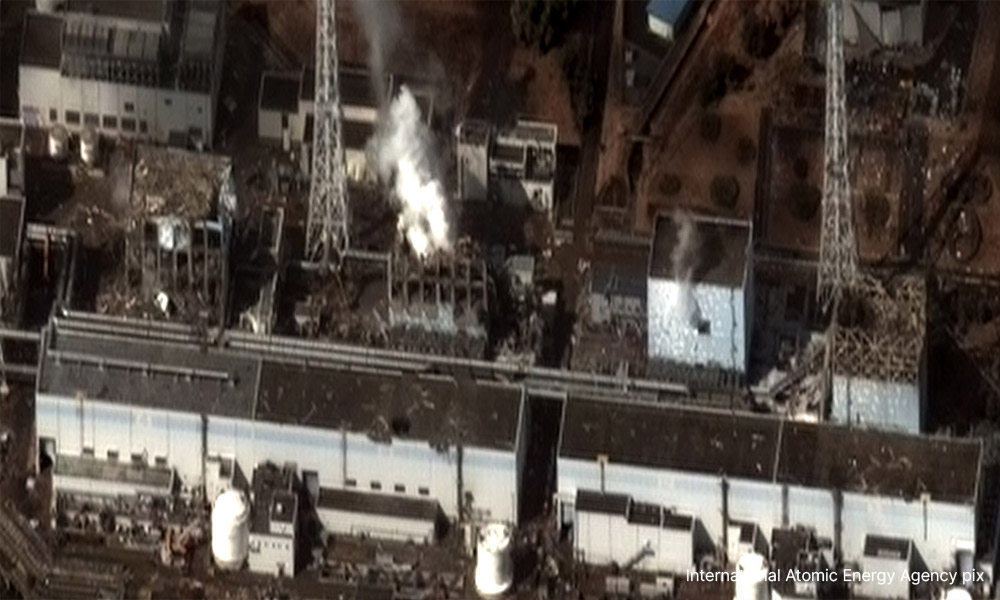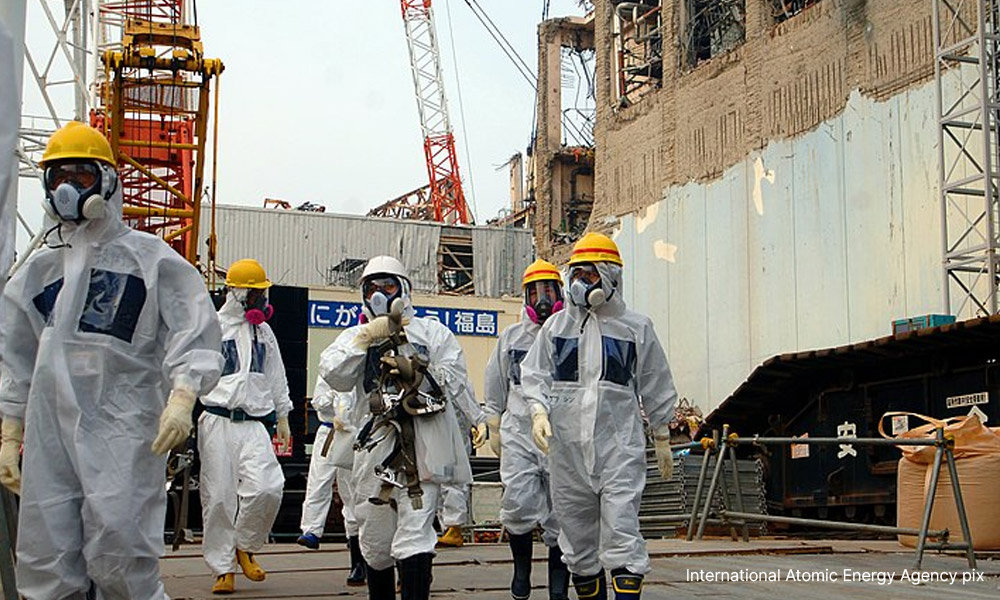KINIGUIDE | On Aug 24, Japan began to release some 1.34 million tonnes of treated radioactive water from a damaged Fukushima nuclear power plant into the Pacific Ocean.
The controversial move has elicited fears and concerns by Malaysians over marine imports from the country.
In this instalment of KiniGuide, Malaysiakini looks into why the wastewater is being released and how it may affect Malaysia.
Why is Japan releasing nuclear wastewater?
In 2011, the Fukushima Daiichi plant was badly damaged after an earthquake and the resulting tsunami struck the northeastern coast of Japan.
While the affected reactors have been shut down, their fuel rods are still producing large amounts of heat that need to be cooled, which the Tokyo Electric Power Company (Tepco) does by pumping cool water over what’s left of the reactor core.

Twelve years after one of the world’s worst nuclear accidents, more than a million tonnes of treated wastewater have accumulated there.
The plant produces 100 cubic metres of wastewater daily. Tanks on site can hold 1.3 million cubic metres.
The nation said that the Fukushima facility will release the treated wastewater in batches - taking 30 years or longer to complete. The amount of water set to be released equates to over 500 Olympic-sized pools.
The contaminated wastewater would first be cleaned by using the Advanced Liquid Processing System (ALPS) to remove as many radioactive elements as possible, save for the radioactive forms of hydrogen and carbon (i.e. tritium and carbon-14) that are too difficult to remove.
The treated wastewater would then be diluted with seawater to just 1,500 becquerels of tritium per litre prior to release, which would be far below regulatory limits. Becquerel is a unit of radioactivity.
Japanese regulations allow for a maximum of 60,000 becquerels per litre, while the World Health Organization allows 10,000.
What is tritium?
Tritium (also known as hydrogen-3, H-3, or 3H) is a hydrogen atom that has two neutrons in the nucleus and one proton, instead of the more common and non-radioactive configuration of just one proton and no neutrons.
The additional neutrons are what makes tritium unstable and radioactive, but it otherwise behaves chemically identical to regular hydrogen.
It is produced naturally in the upper atmosphere when cosmic rays strike nitrogen molecules in the air, as well as during nuclear weapons explosions and as a byproduct in nuclear reactors.
It exists in our everyday environment including in tap water, in the rain, and in the air.
Nuclear energy expert Tony Irwin said that several nuclear facilities around the world discharge tritium into rivers and oceans at higher concentrations than the treated water that is set to be released from Fukushima.
“Low levels are no problem. Very high levels are a problem. But the sort of levels we’re talking about with this discharge are negligible,” he was quoted saying by The Washington Post.
Are there risks of releasing the wastewater?
Japan has said that the release of treated water from the plant operated by Tepco is “consistent with international safety standards”.

United Nations nuclear watchdog - the International Atomic Energy Agency (IAEA) - dispelled rumours of contamination, stating that the release will have a “negligible” impact on the environment.
IAEA director-general Rafael Grossi on Aug 29 said that tritium concentration in wastewater being released from Japan’s stricken Fukushima Daiichi nuclear plant is under expected levels and poses no risk to the population.
Rafael also presented a report on July 4 to Japanese Prime Minister Fumio Kishida which confirmed that the discharge of ALPS treated water taken by Japan is consistent with relevant international safety standards.
“Furthermore, the IAEA notes the controlled, gradual discharges of the treated water to the sea, as currently planned and assessed by Tepco, would have a negligible radiological impact on people and the environment,” he added.
Nuclear power plants around the world regularly release wastewater with tritium levels above that of the treated water from Fukushima.
It is standard practice throughout the nuclear industry globally.
What do Japan’s critics say?
Japan’s neighbouring countries China and South Korea have strongly protested the release of the wastewater and have since banned all marine imports from the country.
China has since banned all marine imports from Japan - despite it being the biggest market for Japanese exports.
Several other countries have also taken a stand on the matter, with the UK government stating its support for Japan.
What is Malaysia’s stand on the matter?
Science, Technology and Innovation Minister Chang Lih Kang said the ministry, through the Atomic Energy Department (Atom Malaysia), considers the IAEA as a primary reference for regulatory activities.
He added that as of Aug 25, Atom Malaysia found no increase in radioactivity in Malaysia’s waters from the release of the treated wastewater.

Malaysia’s health director-general Dr Muhammad Radzi Abu Hassan, on the other hand, said that the Health Ministry will closely inspect all high-risk food products imported from Japan for radioactive material content.
“The Health Ministry will impose a Level 4 (Surveillance) inspection at the country’s entry points on high-risk food products imported from Japan for the analysis of radioactive material content,” he said in a statement.
He said Malaysia has conducted similar surveillance on Japanese seafood in the wake of the 2011 earthquake and found the radioactivity of all samples to be within safe limits.
Bernama reported that the Fisheries Department (DOF) stated that it would ensure that live marine fish imports were free from radionuclide contamination.
The DOF said that Malaysia imported fishery products from Japan for frozen food purposes, namely sardine and mackerel products, while live fish only involve ornamental (freshwater) fish such as koi carp (Cyprinus carpio) and not marine fish.
Deputy Agriculture and Food Security Minister Chan Foong Hin, meanwhile, urged the public to remain calm, stating that his ministry was working closely with other agencies to monitor food safety levels.
Civic group Nirvana Asia raised concerns about the effects of the water release on human health, marine life, and the environment.
Nirvana Asia Group founder and executive chairperson David Kong Hon Kong said that as of Aug 28, tens of thousands of Malaysians have signed a petition protesting the wastewater release.
Kong said that the signatures collected would be handed over to the Japanese embassy to urge the Japanese government to stop the release.
So should we also stop eating seafood imported from Japan?
Based on the assurances by the Malaysian government, it seems that there is no cause for concern yet.
Universiti Sains Malaysia’s (USM) senior lecturer Akbar John told Channel News Asia that food safety in Malaysia will be ensured under the implementation of Level 4 (Surveillance) inspection.
However, he said that inspections alone could not guarantee complete safety as a major concern was the data transparency from both Japan and neighbouring countries on the level of tritium contamination.
“The public should be made aware of the contaminant level through the government online portal and continuous long-term monitoring will ensure public safety,” he was quoted saying.
Akbar added that the Malaysian government could also conduct risk assessments and encourage the public to diversify food sources to reduce the reliance on imported food products.
In an effort to dispel concerns, Kishida and three Japanese cabinet ministers had eaten Fukushima fish sashimi at a lunch meeting to show that the fish was safe. - Mkini



No comments:
Post a Comment
Note: Only a member of this blog may post a comment.